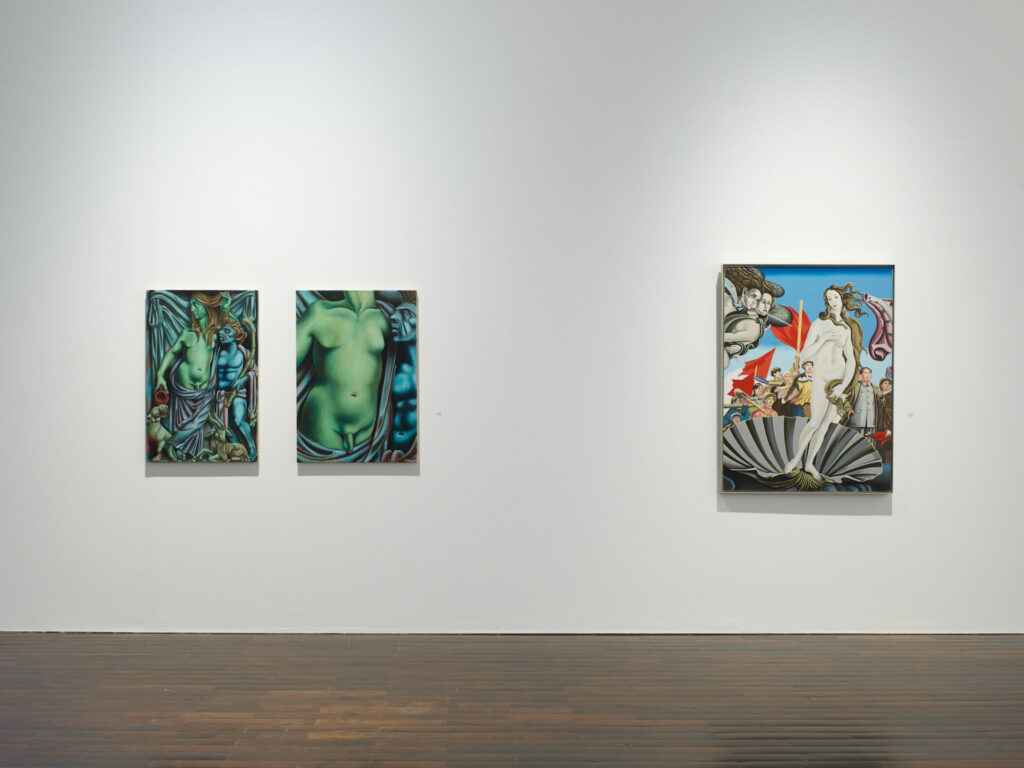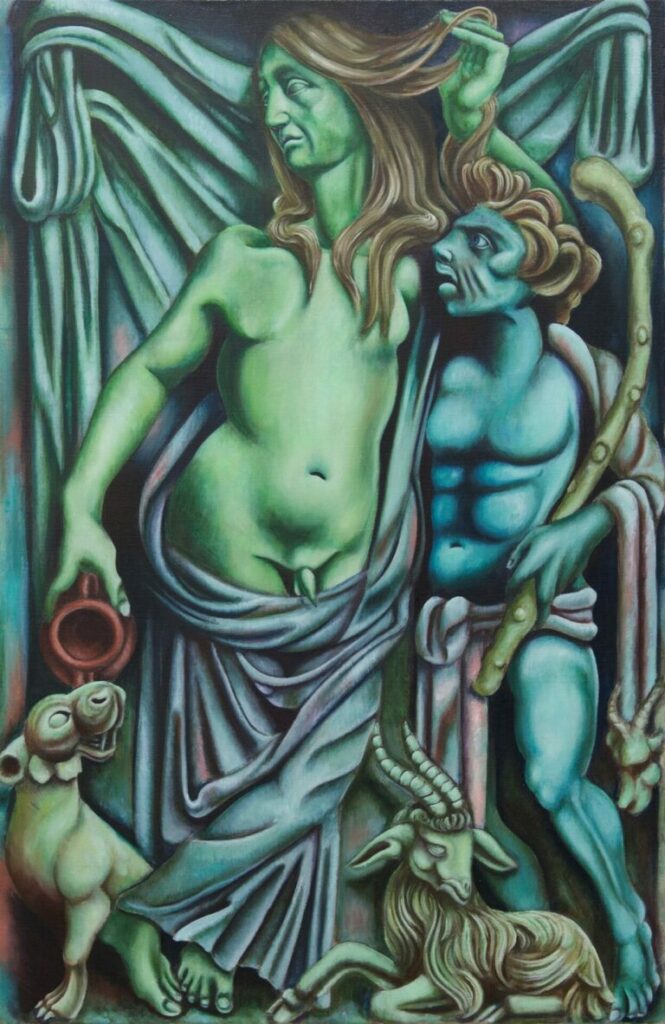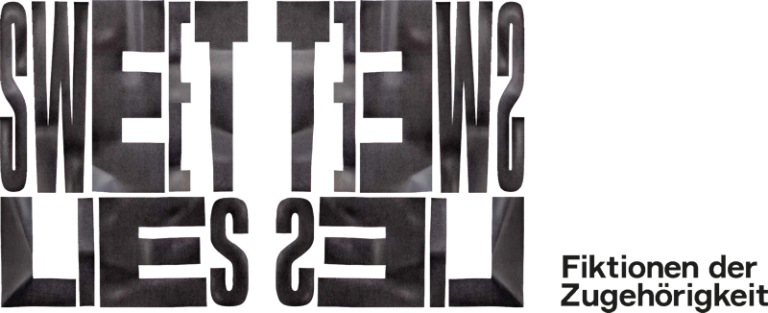Erró
* 1932 in Ólafvik, Iceland
lives and works in Paris since 1958, France

Erró became famous for his Tableaux Chinois series of over 130 works, which he worked on from 1972 to 1980. Venus is one of them. In his pictorial process, the painter always proceeds in a similar way: On his travels he collects advertising materials, news photos, caricatures, posters and so on, which he later assembles into collages that serve as models for his paintings. These paintings always remain attached to the figurative, reminiscent of Pop Art and have comic features.
With the Tableaux Chinois, Erró is among the first artists of the Global North to appropriate the propaganda images of the dictator Mao Tse-tung 毛澤東 (1893-1976). Yet these images are pure fiction: the Tableaux Chinois show Mao in the presence of cultural objects understood as Western, such as Botticelli’s Venus. They are to be understood as an allusion to the increasing popularity of Maoism, which could also be observed in Europe from 1968 onwards, as artists, students, and politicians began to identify with the ideals. Thus the paintings of the series illustrate on the one hand the utopian ideal of a classless society and on the other hand the fear of the Chinese Cultural Revolution, whose ideas spread across the world. The ironic moment in the meeting of Mao and Venus is that the dictator left China only twice in his life to attend the Communist Party Congress in Moscow.
Nevertheless, Erró tells the story of Mao’s triumphant, albeit fictional, trip around the world, appearing behind Venus with his designated successor Lin Biao 林彪 (1907-1971) and flag-waving entourage. This stereotypical depiction of class fighters helps viewers identify them as such. At the same time, the Maoist ideology of armed class uprising and permanent revolution can be recognized in them. This event is preceded by the central figure from Botticelli’s The Birth of Venus (c. 1485/1486). Here Erró’s desire for contradiction and experimentation with new and old pictorial motifs, high and popular culture, becomes comprehensible. It is also clear from the detail he chooses from Botticelli’s painting that he was working with a collage: thus Zephyr and Chloris on the left edge of the picture, as well as one of the Horen on the right edge, seem cut off in comparison to the original motif.
The original painting, like the appropriation of Erró, does not show the birth of the goddess, but the moment after her birth, shortly before she steps out of the scallop shell onto land. The depicted was preceded by Uranus being castrated by his son Saturn with a sickle. He threw the genitals into the sea, whereupon the semen mixed with the spray and Venus was born from it. Venus, the goddess of love and seduction, served as a motif for the glorification of female beauty. Especially since the Renaissance, a canon of recurring motifs from Greek and Roman antiquity and their mythology has been used to show eroticizing subjects in contrast to chaste biblical depictions. With figures from the ancient spectrum, it was therefore possible to show the human body largely uncovered without running the risk of being accused of immorality. The motif The Birth of Venus is one of them. On the basis of the unclothed female body, various themes are negotiated here, starting from the myth, thus making the female body the object of a discourse. In addition, an aesthetic norm is inscribed, which is handed down over the centuries and updated again and again. This circumstance does not exclusively concern the female body, but it is stylized as an object to a particular degree.
in dialogue with

Jannis Marwitz
Untitled, 2017
